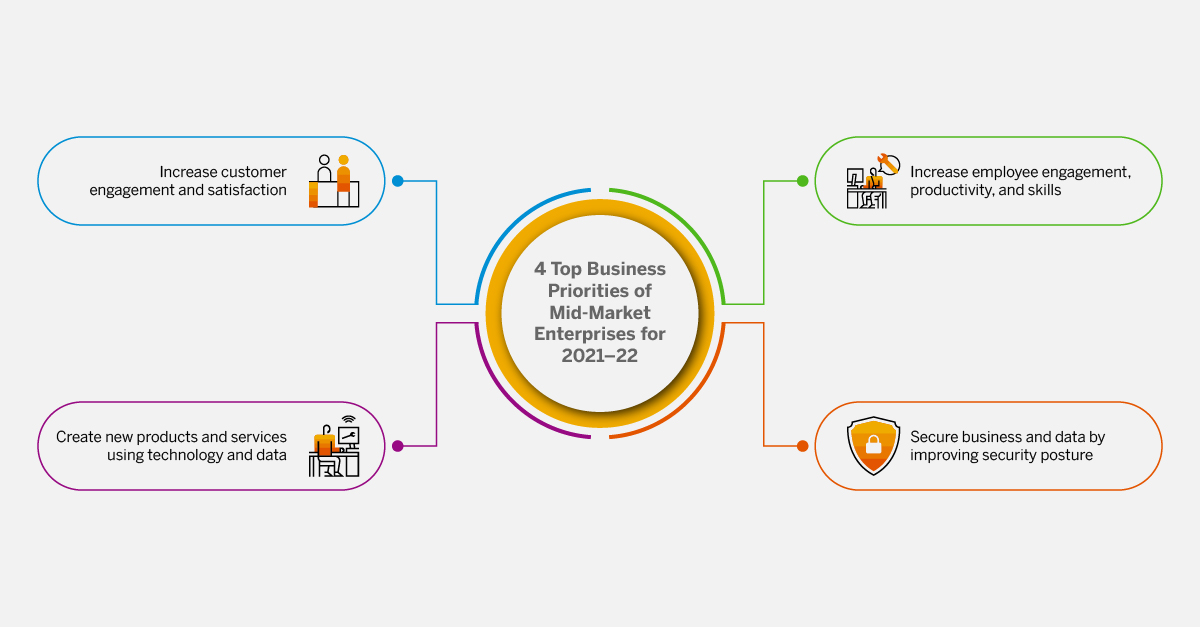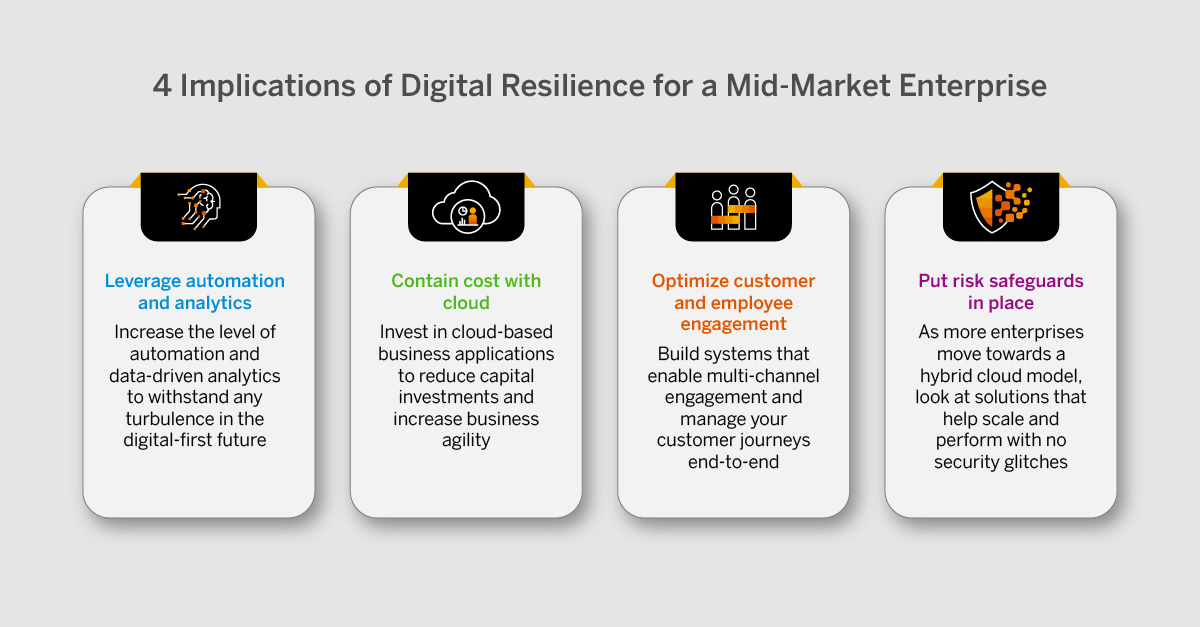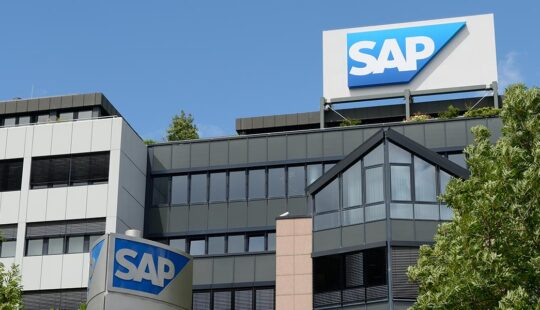In many ways, India’s mid-market segment is considered the growth engine of the Indian economy. But it was severely impacted by the pandemic, especially the second wave.
As operations and movement of goods came to a halt, suppliers could not fulfill orders. The consequent demand-supply mismatch and falling inventory levels became a challenge. With a high percentage of the workforce not being able to report to work, overall productivity was impacted, as many processes were still manual. The quality of products/services was also affected, and regulatory and compliance issues loomed large.
An IDC Infobrief commissioned by SAP aims to understand the state of the mid-market segment in the aftermath of the second wave of COVID-19.
Covering six different industries, the study was comprehensive in representing the importance of technology for an industry. The study covered over 350 mid-market enterprises – across chemicals, industrial manufacturing, life sciences (including pharma and pharma manufacturing), professional services (including IT/IT-enabled Services), retail and consumer packaged goods and EC&O (engineering, construction, and operations) industries. These enterprises reported annual revenues in the range of INR 500 crore–INR 2,000 crore. Among the respondents, more than half were C-level executives; the remaining occupy roles such as Director and above in their organization.
Companies that had pivoted on technology were able to cope with disruptive forces. Indeed, successive waves of COVID-19 have brought the importance of technology in businesses to the fore, as lockdown measures across the world disrupted supply chains.
Those ahead in the technology adoption curve raced to build digital resiliency—the ability to adapt rapidly to business disruptions by leveraging existing digital capabilities to restore business operations as well as capitalize on the changed conditions.
The study provided interesting insights into digital resiliency and its components, including business and IT priorities of Indian mid-market enterprises, such as:
- Providing smoother customer journeys in the virtual space became a priority after the pandemic. Now, 40% of mid-market enterprises are taking an end-to-end approach to manage and customize user journeys across departments. During the pandemic, employee retention was a top challenge for human resources teams at these mid-market enterprises. Half of these enterprises are now adopting organization-wide technology initiatives to enhance employee engagement.
- Hopes of revival hold as three-fourths of all enterprises studied expect their operations to return to pre-pandemic levels by the end of 2021.

For mid-market enterprises, business revival and digital resiliency are intertwined goals to work towards. Almost 83% of the enterprises studied said they were focusing on resiliency objectives like business continuity, to ensure operations remain unaffected due to disruptions in the future. To build operational resiliency, these enterprises brought in process automation to improve their operations and serve customers. An important step: focus on the management and improvement of customer journeys.
As the mid-market segment innovates and improvises, notwithstanding their limited resources, the pertinent question is about their business and technology priorities in the future.
What are the business and technology priorities of mid-market enterprises for 2022 and beyond?
With the need for digital transformation becoming evident, mid-market enterprises have truly embraced the power of digital to create agility, flexibility, and scalability. Optimistic about revival, 74% of enterprises in India will increase or retain their spend on IT security, governance, and risk management in 2022.
Exact priorities depend upon the perceived importance of technology in an industry. Highly regulated industries, for instance, are driving adoption of data management and security technologies. These sectors include banking and financial services, healthcare and pharma, and professional services. However, better customer service through touchless solutions, uninterrupted operations through automation, and seamless user experience through self-service options are also important. In other words, top business and technology priorities are centered on employee and customer engagement, security, and modernization to improve operations.
The IDC InfoBrief commissioned by SAP, ‘The State of Midmarket Enterprises in India: A Perspective on Digital Resiliency’, identified the following as the top business priorities of the mid-market enterprises for 2021–22:
- Increase customer engagement and satisfaction
- Increase employee engagement, productivity, and skills
- Create new products and services using technology and data
- Secure business and data by improving security posture

Even in the face of a business disruption, a digitally resilient organization’s workforce remains not only secure but also productive, engaged, agile and adaptive. Having understood this, mid-market enterprises are now prioritizing strategic initiatives for better employee engagement. These include:
- Upgraded network connectivity for better productivity and security
- Cloud-based collaboration solutions
- Simplifying and automating employee/HR related activities
- Frequently used applications enabled or configured on mobile
Retaining existing customers and acquiring new customers is another area of prime focus. For this, enterprise investment is focused on end-to-end seamless customer lifecycle management. Priorities include customer engagement platforms, mobile enablement, social media management platforms or capabilities, and customer analytics platforms.
To help achieve employee and customer-centric business objectives, the top technology priorities for 2021–22 are:
- Support work from home: productivity without disruptions
- Gain insights into business operations, products, and services
- Customer experience programs like loyalty programs, personalization, etc.
- Application upgrades, workload migration to cloud (Software as a Service)
Modernization and cloud will be key imperatives in the Digital Resiliency narrative. And the top drivers behind application modernization initiatives:
- Cognitive capabilities to integrate AI and analytic capabilities
- Enterprise digital transformation agenda to increase business agility, innovation and deliver enhanced experiences
- Gaining competitive edge
- Improving time to market
- Talent shortage
- Better security
Enterprises are looking to boost their IT investments in cloud, cybersecurity, analytics, and business intelligence, as well as productivity applications, to stay competitive. Some of the key initiatives include migrating on-premises applications to cloud, securing data and systems, automating operations, and digitalizing the entire customer journey.
While almost 74% of the mid-market enterprises intend to migrate more applications to cloud, many other enterprises (46%) are looking to craft a hybrid cloud strategy. Agility, performance, and availability were the key drivers for adoption of hybrid cloud platforms. Here, identifying the right deployment model for the right workload and having a single pane of control to manage hybrid cloud environments is critical.
So, what does this mean for you?
While mid-market enterprises realize the role of technology in their business to build digital resilience, most of them are working towards stabilizing operations and bringing them to normalcy. If you are the leader of a mid-market organization that is on the same path, you must power your engines to propel through the journey so that you can shift your sight to focus on elements of digital resiliency.
The four fundamental implications for a mid-market enterprise like yours include:
- Leverage automation and analytics: Mid-market enterprises struggled during the pandemic from lack of automation in their operations. There is a need to increase the level of automation and data-driven analytics to withstand any turbulence in the digital-first future we are stepping into.
- Contain cost with cloud: Like most mid-market enterprises, if you intend to reduce your IT spending for on-premises business applications, invest in cloud-based business applications to reduce capital investments as well as increase business agility.
- Optimize customer and employee engagement: Employee and customer engagement need more IT investments. Specially to attract and retain customers, you need to build systems that enable multi-channel engagement and manage your customer journeys end-to-end.
- Put risk safeguards in place: As more enterprises move towards a hybrid cloud model, the need for a secure architecture will be paramount. You should look at solutions that help scale and perform with no security glitches. With the ever-expanding threat landscape, you must prioritize risk management services in the future.

In conclusion
The mid-market segment has immense potential to unlock India’s growth story, especially in the smaller towns and cities. And this can be fast tracked by increasing the role of technology in business. However, before mid-market enterprises look at building Digital Resiliency, they must get their operations back to pre-pandemic levels. By utilizing the power of cloud, mid-market enterprises can actualize their potential and gain access to process efficiencies demonstrated by bigger players. To find out how to accelerate your journey to becoming digitally resilient and setting yourself up for success in the long run, download the IDC Infobrief commissioned by SAP on ‘State of Mid-Market Enterprises in India, a Perspective on Digital Resiliency’.
All of the above data points are derived from ‘IDC InfoBrief commissioned by SAP, The State of Midmarket Enterprises in India, A Perspective on Digital Resiliency, December 2021, Doc.#AP241284IB



